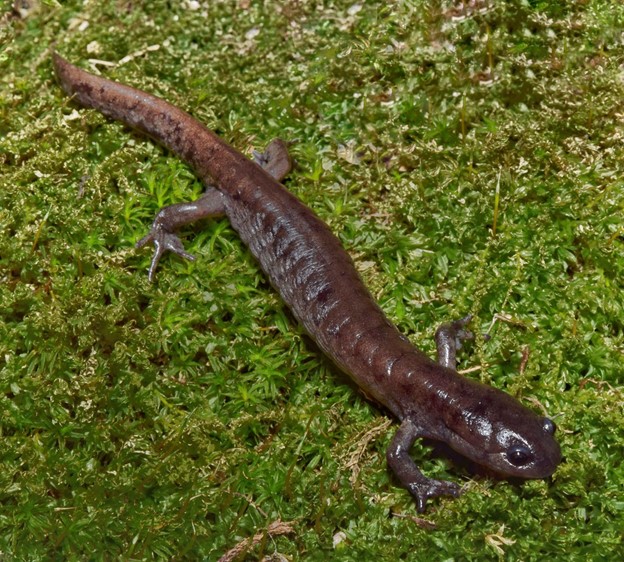Breeding Season for Small-mouthed Salamander is Underway in Eastern Kansas
It’s that time of year again. Small-mouthed salamander breeding season is upon us. It may seem strange that this species is active when it’s still so cold outside, but this is completely natural for them.
 Between January and April, thousands of adults will make there way from their below ground wintering spot to ephemeral pools and shallow streams to breed. After rain showers in early spring, adults often cross roadways to get to their destination, making them easy to spot if you’re traveling at night.
Between January and April, thousands of adults will make there way from their below ground wintering spot to ephemeral pools and shallow streams to breed. After rain showers in early spring, adults often cross roadways to get to their destination, making them easy to spot if you’re traveling at night.
Once at their chosen breeding location, courtship between males and females begins in the form of nudging and pushing by the male. Around 90% of all salamanders reproduce by internal fertilization, the small-mouthed salamander included. But it’s a little different than you’d expect. In the case of small-mouthed salamanders, after courtship, the male deposits a spermatophore on nearby vegetation or pond debris. It’s up to the female to swim over and pick up the small packet for fertilization to be complete.
Females then lay 300 to 700 eggs contained within a jelly mass, or egg mass, attached to plant stems or leaves within the water body. After the eggs are laid, the females and males leave the breeding grounds.
For the next two months after hatching, the gilled salamander larvae live out their best lives in the pond or stream until it’s time to metamorphose into young adults and leave the water behind. Throughout the rest of the summer and fall, small-mouthed salamanders can sometimes be found under logs and rocks where moisture levels are high. They’ve even been found in some moist basements! Are there any salamanders in your basement?
